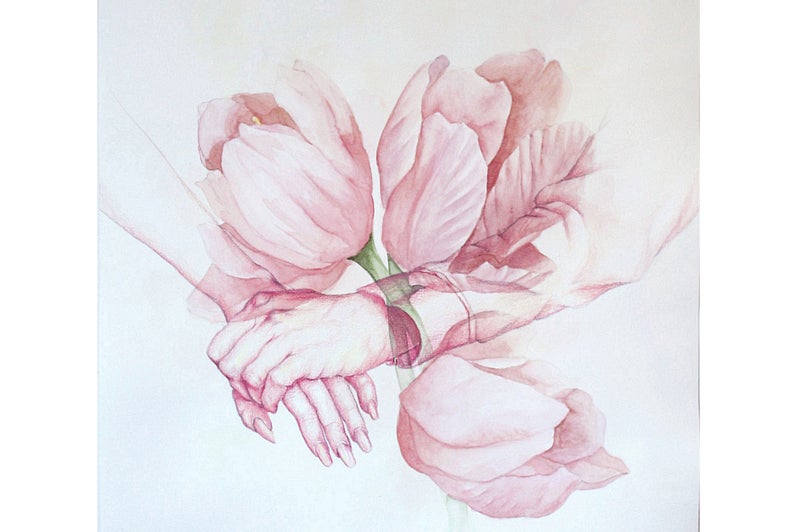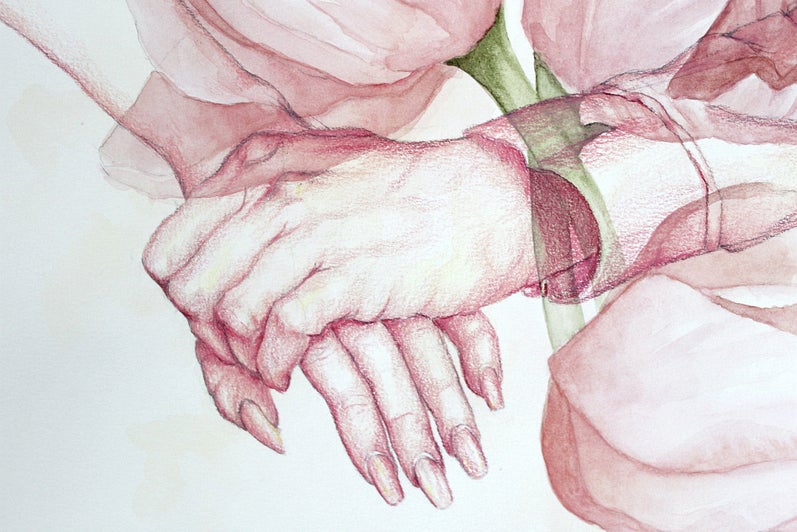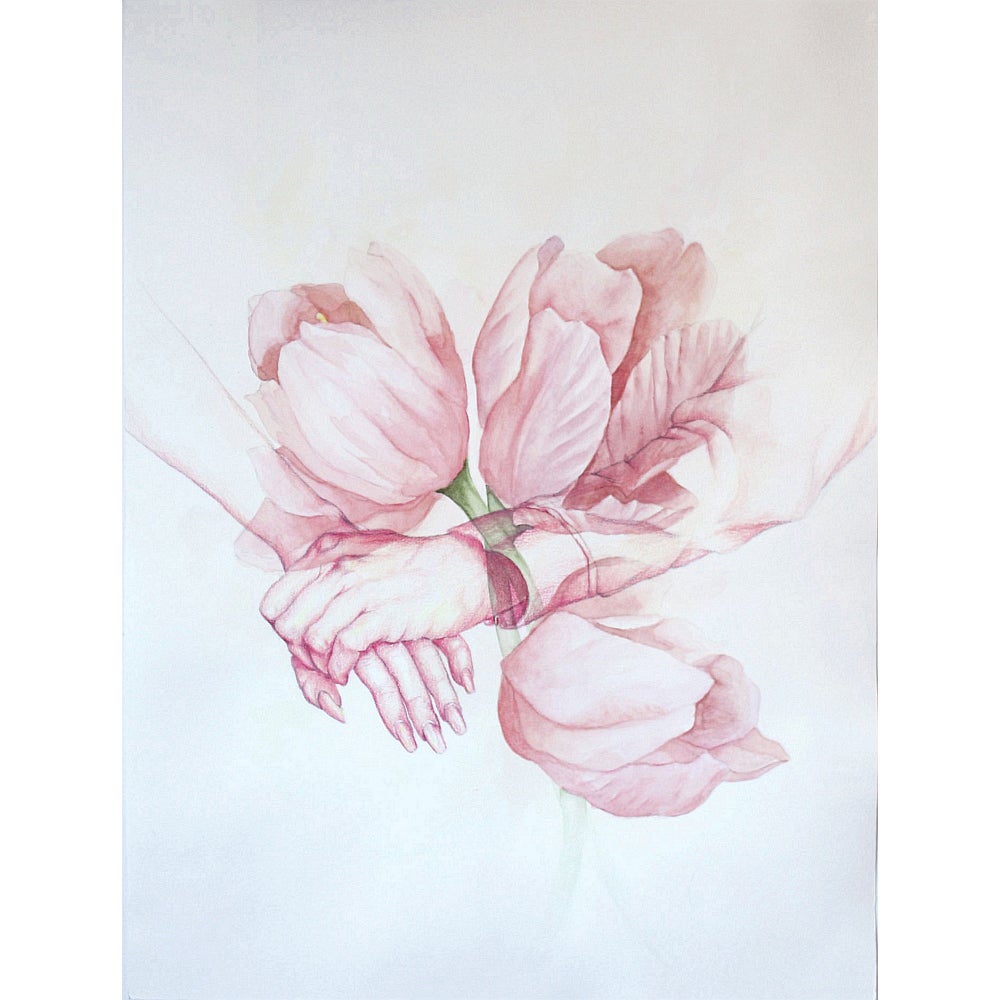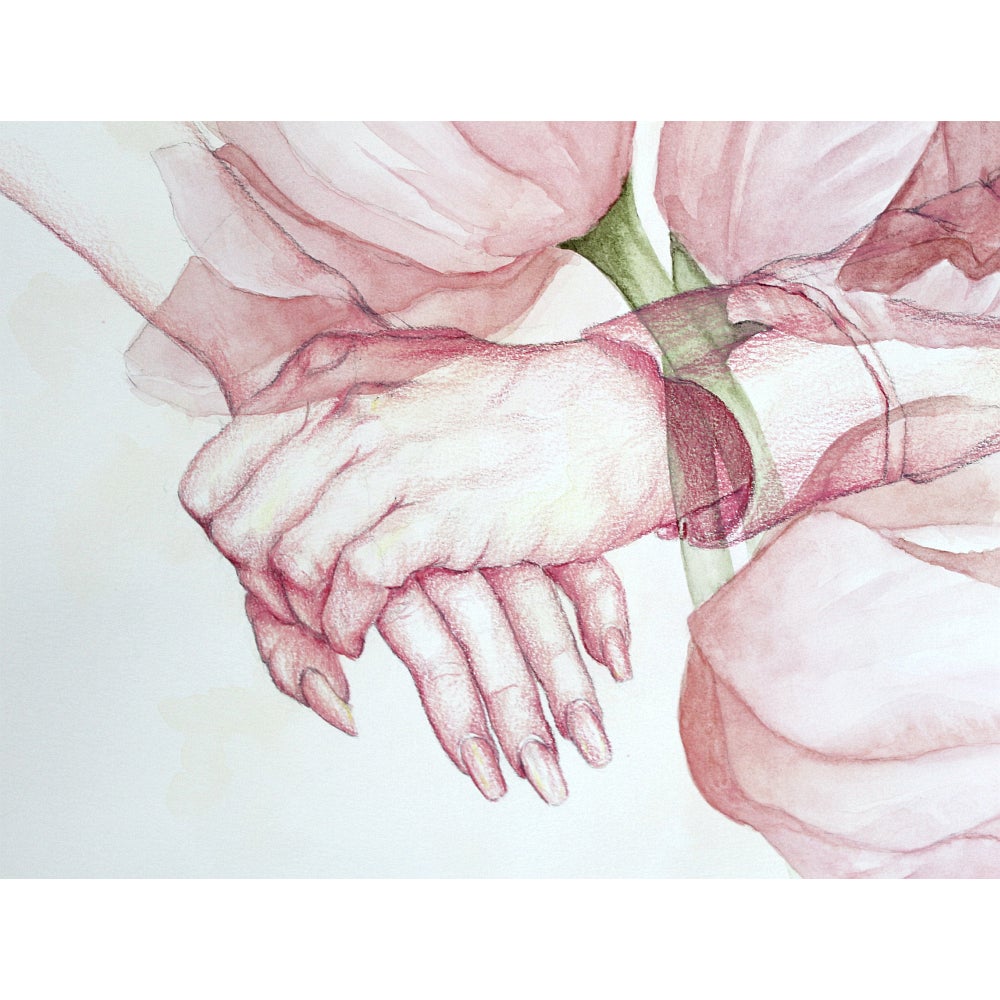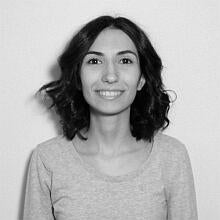
Email: lopes99@hotmail.ca
Kaitlyn Lopes is a fourth-year Fine Arts student at the University of Waterloo, who lives and works in Kitchener, Ontario with her family. She is a mixed media artist who primarily focuses on both delicate watercolour paintings, and pencil or pen on paper. Her work explores themes of feminism, female domesticity and labour, underscoring the connection between the wife or mother figure, labour, and the natural world.
Throughout her experience as a student artist thus far, Kaitlyn has taken part in three group exhibitions in the Artery (a student-run gallery at the University of Waterloo). Currently, Kaitlyn is working on her fourth-year Fine Arts thesis.
Artist Statement
Much of today’s society is shaped by stereotypes which envelope us into categories that we may not completely fit into, or at all, for that matter. Females are continuous victims of this labelling, as they are often shown as weak, domestic beings without a strong presence in the workforce. Oftentimes, however, the labour completed in the household is overlooked as legitimate labour and aids in this degrading view of women.
In response to this, my work explores the stereotype given to women about their connection to the natural world, and the various actions performed by my mother daily. This series combines images of flowers symbolic of mother’s love, affection, and care with images of my mother performing a breadth of activities in a collage style to demonstrate the multidimensionality of the mother figure.
In this first piece of my “Mother Nature” series, titled Mother’s Care, I layer a drawing of my mother’s hand holding my sister’s overtop of a watercolour painting of tulips. This action demonstrates a moment of care that my mother provides to all three of her children on a daily basis, reflecting the symbolism of the pink tulips. I have intentionally created within this piece in a monochromatic way in order to showcase the connection between the symbolism of the tulips and my mother’s action, but also the female body’s relations with the natural world.
Interview
How have your lived experiences informed your artistic practice?
My artistic practice is centered around feminism and revealing, or at least acknowledging, sexist stereotypes. As a female, this modern world faces you with sexism, despite how exposed or hidden that may be. Thankfully, I have not been faced with any specific or direct moments of gender inequality, but I am certainly aware of it surrounding me. I think I was introduced more to feminism and these issues during my first Women’s Studies class taken here at the University of Waterloo. In high school, unfortunately these types of classes weren’t given, so I never really had the opportunity to dive into discussing these issues. The university course opened my eyes to issues that have been glossed over by the media. As a result, my work has been influenced by feminist ideals over the proceeding years, whether that be conscious decisions or not. It wasn’t until my third year or even this final year in my program that I began using that as the theme driving my work, purposefully.
What does your work aim to say?
My current work showcases the dimensionality of women as individual human beings. It primarily focuses on my mother, who is not only a mother to three children, but also a working woman. My aim is to show viewers that although women are stereotyped in a way that is connected solely to motherhood and the natural world, they are much more than that. Even though my mother is a mom, that doesn’t mean she is not an individual person; being a mother doesn’t define who she is. She can exist in a domestic space, but that isn’t the only space she is found within.
What is your usual artmaking process like? What are your preferred mediums?
My artmaking process involves a lot of planning. I will continuously think and develop something in my head, in my sketchbook, and even within little tests before I actually begin making that piece. For example, if I don’t have a clear idea in my head of what I want to draw, then I can’t draw. Usually, I work with pencil or pen on paper, sometimes even coloured pencil. My current work, however, mixes these mediums with watercolour paint, allowing more fluidity in my work that I have been enjoying immensely.
What made you want to pursue art?
I’m honestly not entirely sure what made me want to pursue art to begin with. I think, initially, it might have been because it was one of the only things I was confident with. During my early elementary education, I struggled with some subjects and it caused me great frustration, but art was something I never had to struggle with. I believe that as I got older, art became something that was a safe space. Even though school wasn’t as frustrating as it once was, art allowed me a place within education that allowed me to feel both confident and free to express my creativity and thoughts.
